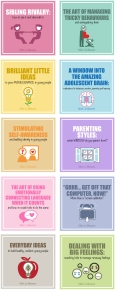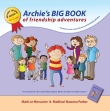Teaching Tough Kids
Chapter 6
Ideas to enrich social and emotional connectionsInside Tough Kids with Asperger syndrome
Overview; Asperger syndrome
Guiding principles to create emotionally sustaining opportunities
Raising acceptance and happiness
- Belonging
- Direct, positive feedback
- Case study, that's normal?
- The need for heroes and role models
- Mentorship
- Build a team
- Unify attitudes
- A mood diary
- Visual strategies
- Strengthening social skills
- Formal social skills programs
- Rules for keeping friends
- Rules for making friends
- Informal social skills practice
- Social stories
- Reading voice, body and face
- Watching behaviour
- Play detective
- Literal versus illusive
- Compliments
- Saying sorry
- Empathy
- Obsessions and collections
- The smart average
- Write yourself onto a list
- PowerPoint
- Teach how to think flexibly
- Review, review, review and celebrate wins!
- Six months before starting at a new school
- Several months before starting at a new school
- Preparation for new events
- Day-to-day transitions
- Homework
- An alternate lunch time
- Safe havens
- Break cards
Chapter sample
Dylan, like many of my clients, has Asperger syndrome. This chapter is inspired by the deep admiration I have for the courage he shows. Can you imagine having to interact in a socially and emotionally rich world, yet consistently finding it difficult to interpret your own feelings and understand the feelings of others? This is what confronts Dylan and others with Asperger syndrome as they do their best to find happiness and success every day.
Guiding principles to create emotionally sustaining opportunities
In this chapter you will find an assortment of ideas teachers, school support
officers, school counsellors and psychologists can use to build socially and
emotionally nourishing opportunities for all kids who experience communication
delays and differences. The primary focus, of course, is for students identified
with Asperger syndrome. For them, not being able to flexibly interpret the social
world triggers emotion and behaviour that is tricky to manage.
Realistically, how much scope is there for us to raise the happiness and emotional connectivity of children at school? The short answer is that providing we have the will, educators can contrive countless opportunities to generate optimistic relationships and situations for young people (Lord and McGee, 2001). Our collective wisdom and care is potent! Yes, it may be more challenging to influence transformations in children with core processing differences, and it is likely more testing to influence constructive change as they become older, but we are a significant group who understand the kinds of structures and messages these kids need to receive...
Plus single $20 postage and handling fee












